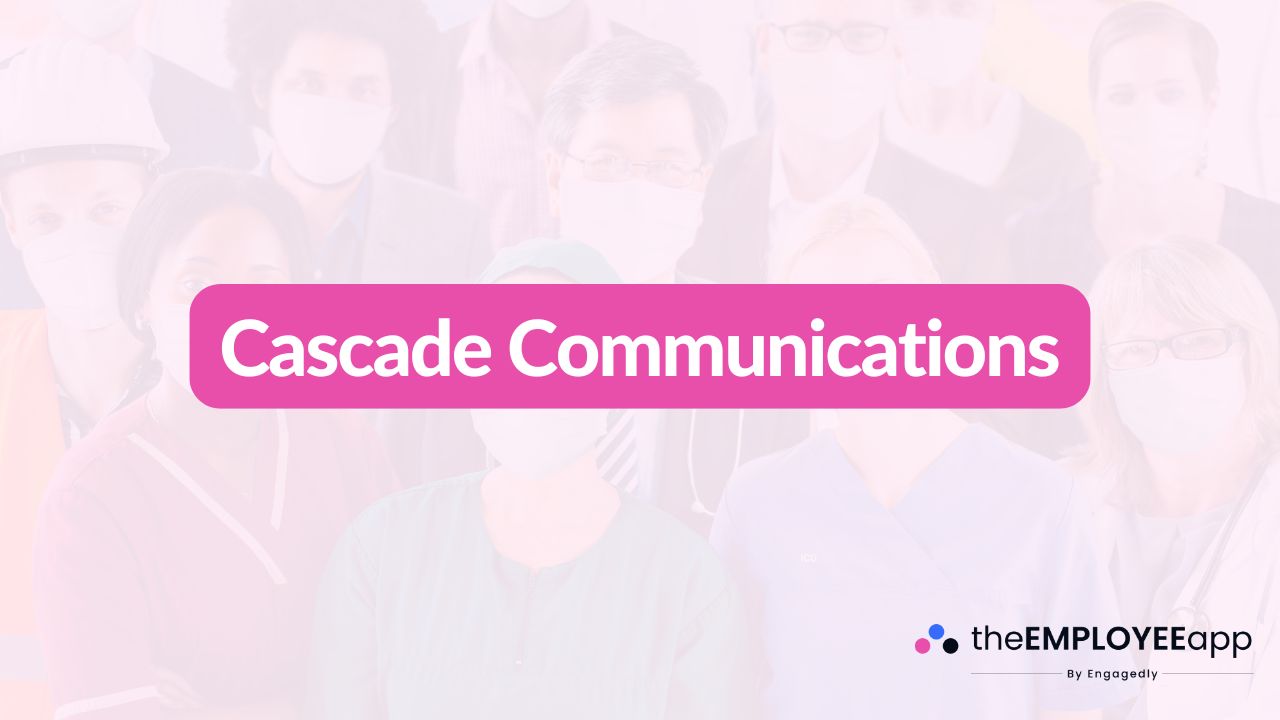
Cascade communications refers to a structured process of delivering important information from the top levels of leadership down through every level of an organization. The term “cascade” reflects how messages flow step by step, starting with executives, moving through managers, and ultimately reaching frontline employees.
This method ensures that everyone in the organization hears consistent, aligned messages, while also allowing leaders at each level to adapt the communication for their specific teams. Cascade communications are especially valuable in large organizations or during times of change, where clarity and consistency are critical.
Effective communication is the backbone of any successful organization, and cascade communications plays a key role in making sure that messages do not get lost or distorted. It provides:
Clarity: Ensures that all employees understand organizational goals, updates, or policy changes.
Consistency: Reduces the risk of mixed messages by aligning leadership at every level.
Engagement: Encourages employees to see how broader company objectives connect to their individual roles.
Trust: When leaders communicate openly and consistently, employees feel more valued and informed.
Cascade communications typically follows a top-down process:
Leadership Message Creation: Senior leaders or executives develop the initial communication. This could include strategic updates, performance results, or new initiatives.
Manager Briefing: Managers at different levels receive the information and prepare to share it with their teams. This often involves customizing the message to ensure relevance.
Employee Communication: Managers communicate the message to their direct reports, ideally through a mix of team meetings, one-on-one discussions, or digital channels.
Feedback Loop: Employees provide feedback or ask questions, which managers can escalate back up the chain, creating a two-way communication process.
This layered approach ensures the original message is preserved while also allowing adaptation to the specific needs of each audience.
Implementing a cascade communication strategy offers multiple advantages:
Improved Alignment: Everyone in the organization receives the same core message, keeping employees on the same page.
Increased Relevance: Messages can be tailored by managers so employees understand how organizational updates impact their work.
Enhanced Accountability: Leaders at all levels are responsible for sharing messages, which increases their role as communicators.
Employee Empowerment: By hearing directly from their managers, employees feel more connected to leadership decisions and strategies.
Reduced Rumors and Miscommunication: Clear and consistent updates help minimize speculation or misinformation.
While effective in theory, cascade communications can face challenges if not managed properly:
Message Dilution: As information moves through multiple layers, the original meaning may become watered down.
Inconsistent Delivery: Some managers may communicate messages effectively while others may not, creating gaps.
Timing Issues: Delays in cascading messages can result in employees hearing updates from unofficial sources first.
Manager Preparedness: Not all managers are trained or confident in delivering sensitive or complex messages.
To maximize the impact of cascade communications, organizations can follow these best practices:
Prepare Leaders Thoroughly: Provide talking points, FAQs, and supporting materials so managers feel confident in delivering the message.
Set Clear Timelines: Establish when and how each level should cascade the information to prevent delays.
Leverage Multiple Channels: Combine face-to-face communication with digital tools such as employee apps, emails, or video updates for better reach.
Encourage Dialogue: Remind managers that communication is two-way; they should invite questions and feedback from employees.
Monitor Effectiveness: Use surveys, feedback sessions, or analytics to evaluate whether the message was understood and acted upon.
Simplify Core Messages: Ensure the main points are easy to remember and communicate consistently across levels.
Modern workplaces benefit from digital tools that make cascade communications more effective. Employee communication apps, intranets, and collaboration platforms allow leaders to share updates directly with managers and frontline staff, reducing delays and ensuring accuracy. These tools also provide analytics to track message engagement and reach, helping organizations refine their communication strategies.
Cascade communications is a powerful method for delivering consistent, meaningful messages throughout an organization. By structuring communication from leadership down to every employee, organizations can foster alignment, strengthen engagement, and build trust. When combined with clear messaging, manager training, and digital tools, cascade communications ensures that every employee understands not only what is happening, but also why it matters to them and their role.